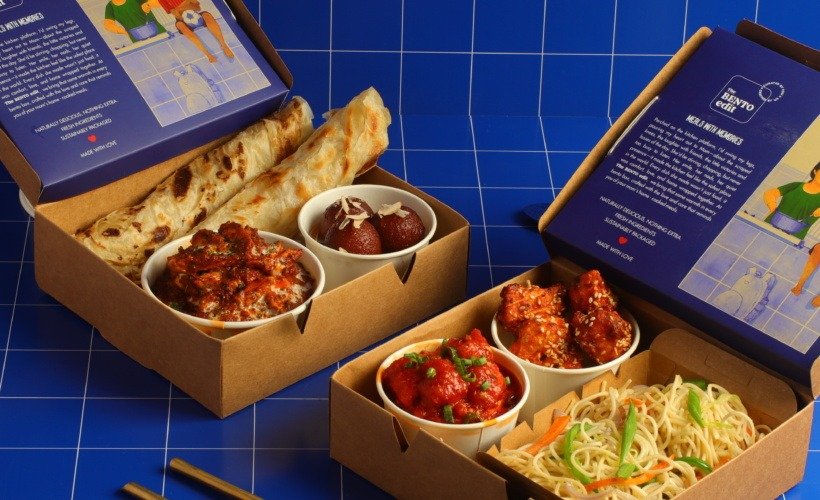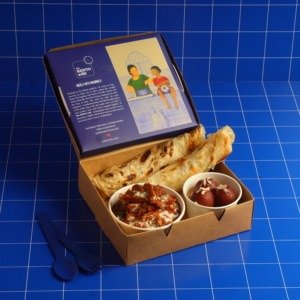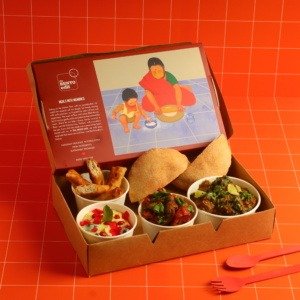
An Indian, a Japanese, a Chinese, a Filipino, a Goan, and a Mongolian boarded a plane – what landed was The Bento Edit
An architect by training and an entrepreneur at heart, Ankit Prabhudesai has always designed with feeling. For him, great spaces don’t just look good, they make you feel good. Over time, he realized food could be approached the same way. Like architecture, a meal could be designed to spark joy, stir emotion, and please the eye.
With The Bento Edit, Ankit translates the principles of proportion, balance, and harmony from the drawing board to the dining table, curating wholesome experiences through rich flavours and bold aesthetics.

The traditional Japanese Bento, a single-portion takeaway meal, typically featuring rice and various components arranged neatly in a box, was the simplistic inspiration. He decided to blend this aesthetic with varied flavours, introducing a unique culinary concept to Goa. Ankit elaborates on the inspiration behind the idea. “It began as a vision to create a meal that was as much about nutrition, visual appeal and balance as it was about flavour. I have always been fascinated by the way a buffet allows you to pick and choose, building a plate that is entirely your own. I wanted to capture that same joy of variety, but refine it into something more intentional.”
Ankit could visualise perfectly proportioned dishes, each in its own space, arranged with the precision and artistry of a typical Japanese Bento. For him, this was not just a way of serving food but a way of designing an experience, where every element is placed with care and purpose. “That’s how The Bento Edit came to life,” he explains. “It is a space where variety meets balance, where flavours carry stories, and where design elevates every meal into a moment worth remembering.”

As a brand, The Bento Edit emphasises mealtime as a deeply personal experience, which Ankit has translated directly into the menu and service. “We design each interaction like we would a space tailored to the person using it,” he says. “Diners choose their components, ‘edit’ their meal to suit their mood, and receive something that feels personal. It’s not just food; it’s a conversation between the diner’s taste and our craft.”
He elaborates on the curation process and the flexibility each diner has when building a box. “We start by designing each bento for balance, where flavours, textures, colours, and portions are all carefully considered so the meal feels complete. Once that structure is set, the diner has full flexibility to choose each component for themselves.” From the base to the main dish and the sides, every element can be customised from the available options, ensuring no two bentos have to be the same. “It is a guided framework, but the final combination is entirely in the diner’s hands,” he adds.
The Bento Edit offers a variety of bento boxes to suit different tastes and occasions. Their core range includes the 3-Bento Prime (Base + Gravy + Starter) for a hearty, flavour-packed meal, and the 3-Bento Classic (Base + Gravy + Dessert) for those who love a sweet finish. They also serve traditional Goan bentos, featuring local favourites like fish curry, prawn balchão, or vegetable tonak, paired with accompaniments that bring out the authentic flavours of the region. “In addition, we’re introducing preset Oriental and other cuisine-based bento boxes, thoughtfully paired to give you a complete themed dining experience. No matter which format you choose, there is always room to personalise your selections,” he adds. 
The Bento Edit was founded on strong emotional undertones. Ankit mentions that growing up in Goa, one learns that food is the most tangible form of love, where someone cooking for you means they truly care. “Embedding this emotional layer into the brand ensures every box carries not just flavour, but warmth and thoughtfulness.”
Marrying two different cultures inevitably presents challenges, a lesson Ankit learned when blending Japanese minimalism with Indian-Goan boldness. “Our flavours are expressive, our curries vibrant. Japanese plating is restrained and precise,” he explains. “The challenge was editing without diluting character; refining portions, reducing clutter, and letting each element breathe while keeping the heart of the dish intact. It is the same process as restoring a heritage building for modern use.”
Sustainability and eco-friendly practices are central to the brand’s ethos. “We use eco-friendly materials across every product we serve. Our paper bento boxes, cornstarch compartment trays, cornflour takeaway bags, and wooden cutlery all reflect our commitment to sustainability,” Ankit notes. The visual identity is just as important, with Bento Blue representing calm sophistication and Tangerine for vibrancy. “Styling follows true bento principles: clean compartmentalisation, visual balance, and pops of colour. The goal is for every box to be as visually satisfying as it is delicious, so the experience feels designed in every sense.” 
Looking ahead, Ankit envisions The Bento Edit becoming a name that feels instantly familiar in Goan homes; a brand people turn to when they want food that is as beautiful as it is flavourful. “Our focus will always be on consistency, design, and creating an experience that people connect with emotionally. There are a few exciting plans in the pipeline, but for now, I will just say that we are working towards making sure that wherever you are in Goa, a Bento Edit moment is never too far away.”
Ankit hopes that every customer will feel a quiet sense of satisfaction after finishing a meal, as if they have just experienced something crafted with intention. “A full stomach, a happy heart, and the feeling that they have been part of a small, beautiful ritual,” he concludes. “That is what I look forward to hearing from our customers.” Six cuisines, one box, endless flavour.





